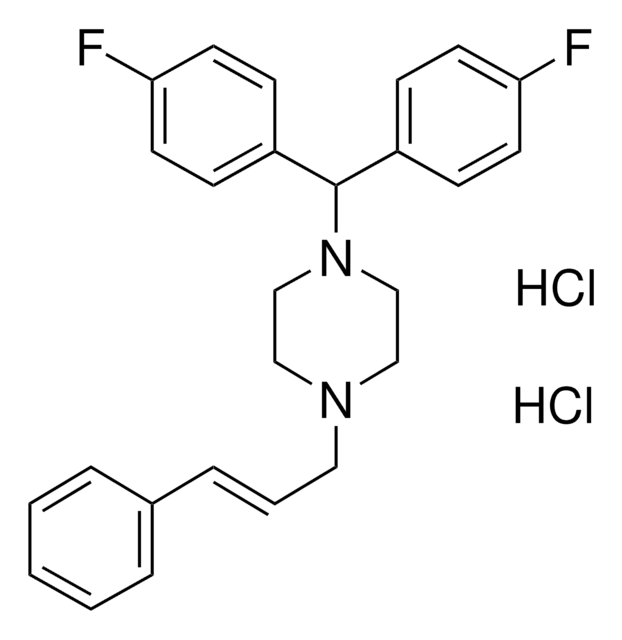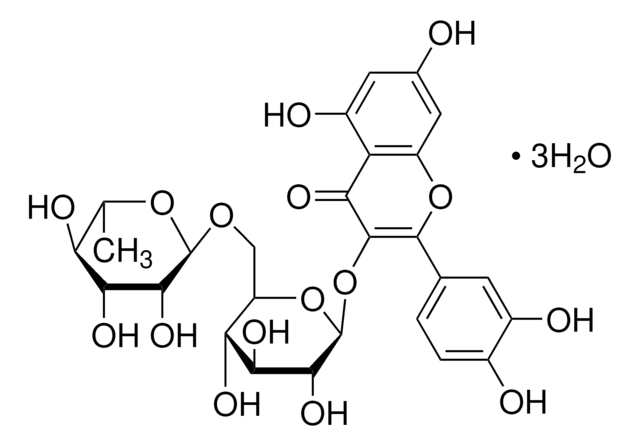Kluczowe dokumenty
F0189900
Flunarizine dihydrochloride
European Pharmacopoeia (EP) Reference Standard
Synonim(y):
1-[Bis(4-fluorophenyl)methyl]-4-(3-phenyl-2-propenyl)piperazine dihydrochloride
About This Item
Polecane produkty
klasa czystości
pharmaceutical primary standard
rodzina API
flunarizine
producent / nazwa handlowa
EDQM
Zastosowanie
pharmaceutical (small molecule)
Format
neat
temp. przechowywania
2-8°C
ciąg SMILES
Cl[H].Cl[H].Fc1ccc(cc1)C(N2CCN(CC2)C\C=C\c3ccccc3)c4ccc(F)cc4
InChI
1S/C26H26F2N2.2ClH/c27-24-12-8-22(9-13-24)26(23-10-14-25(28)15-11-23)30-19-17-29(18-20-30)16-4-7-21-5-2-1-3-6-21;;/h1-15,26H,16-20H2;2*1H/b7-4+;;
Klucz InChI
RXKMOPXNWTYEHI-RDRKJGRWSA-N
Szukasz podobnych produktów? Odwiedź Przewodnik dotyczący porównywania produktów
Opis ogólny
Zastosowanie
Działania biochem./fizjol.
Opakowanie
Inne uwagi
produkt powiązany
Hasło ostrzegawcze
Warning
Zwroty wskazujące rodzaj zagrożenia
Zwroty wskazujące środki ostrożności
Klasyfikacja zagrożeń
Acute Tox. 4 Oral
Kod klasy składowania
11 - Combustible Solids
Klasa zagrożenia wodnego (WGK)
WGK 3
Temperatura zapłonu (°F)
Not applicable
Temperatura zapłonu (°C)
Not applicable
Wybierz jedną z najnowszych wersji:
Certyfikaty analizy (CoA)
Przepraszamy, ale COA dla tego produktu nie jest aktualnie dostępny online.
Proszę o kontakt, jeśli potrzebna jest pomoc Obsługa Klienta
Masz już ten produkt?
Dokumenty związane z niedawno zakupionymi produktami zostały zamieszczone w Bibliotece dokumentów.
Nasz zespół naukowców ma doświadczenie we wszystkich obszarach badań, w tym w naukach przyrodniczych, materiałoznawstwie, syntezie chemicznej, chromatografii, analityce i wielu innych dziedzinach.
Skontaktuj się z zespołem ds. pomocy technicznej








